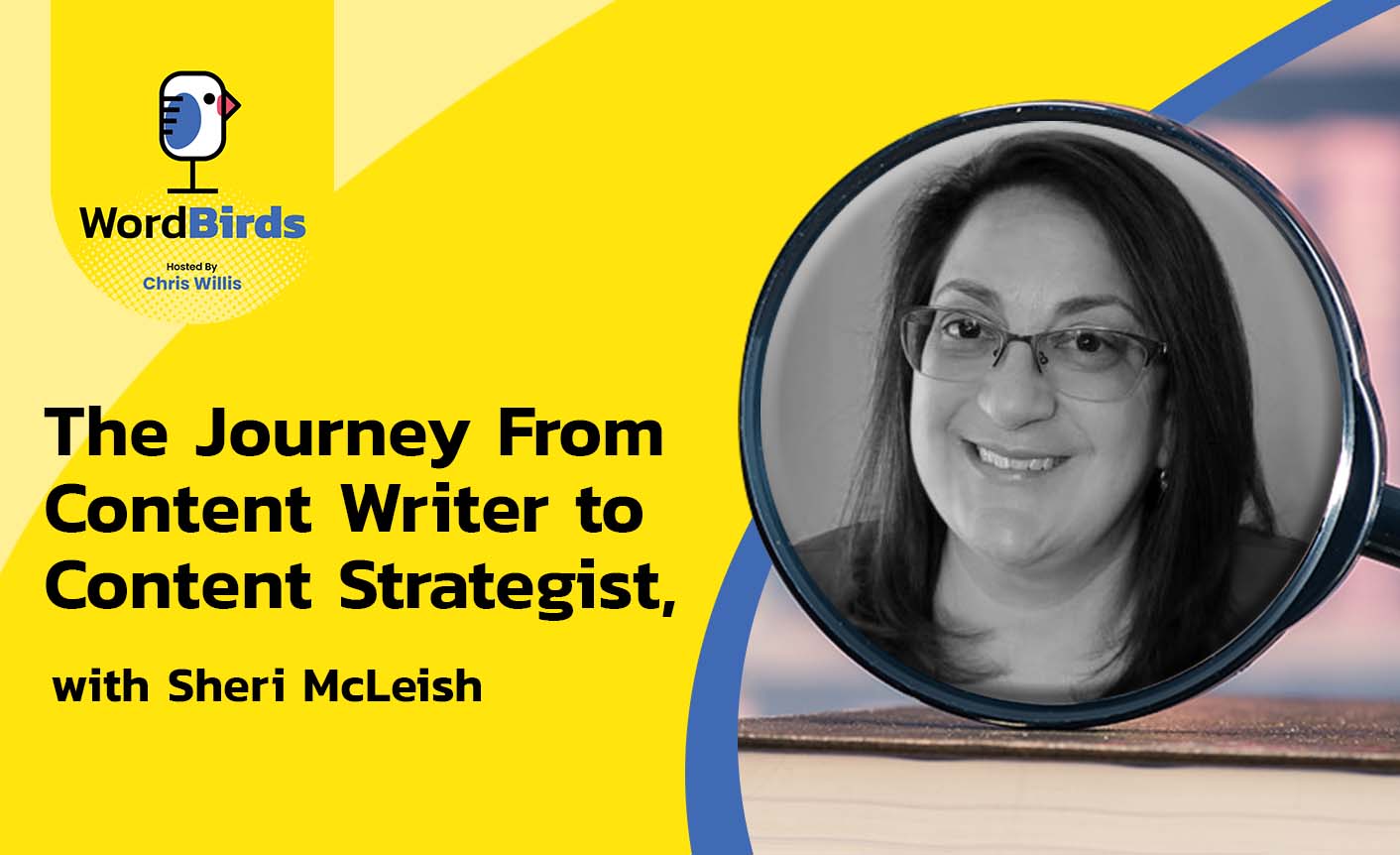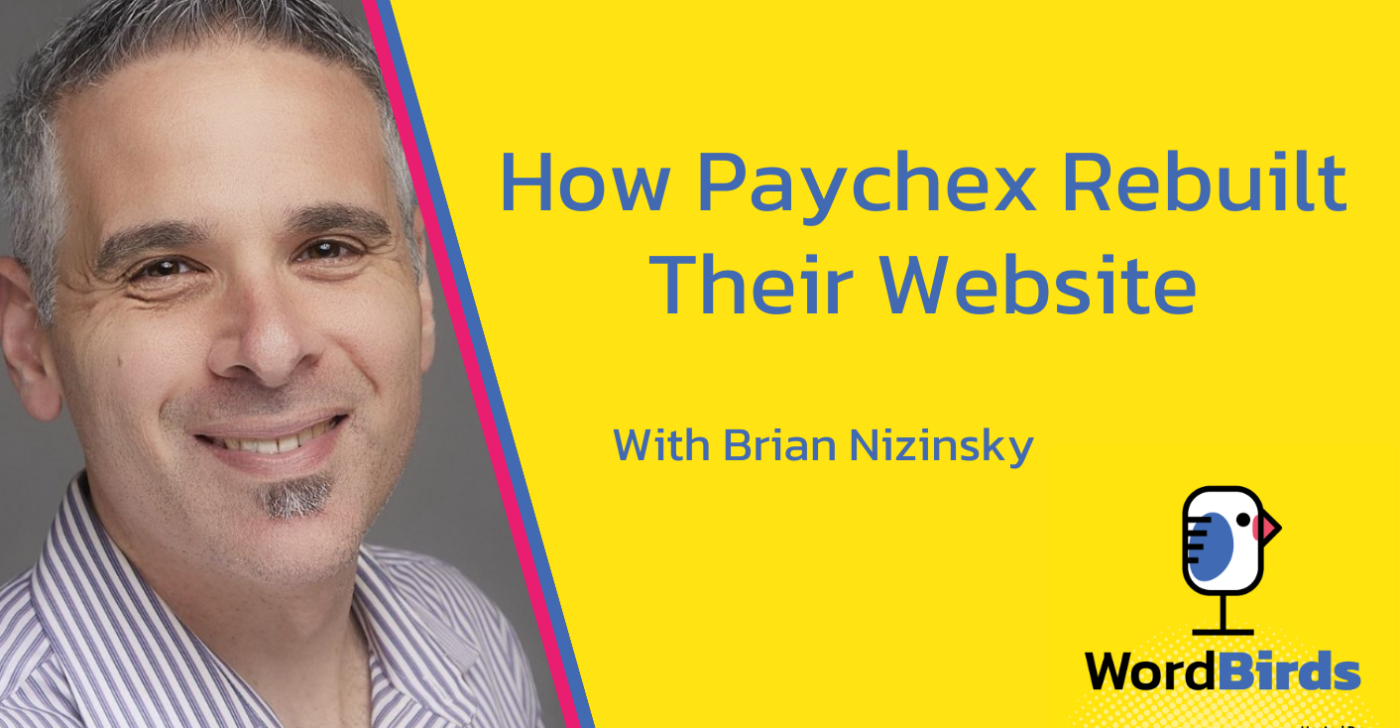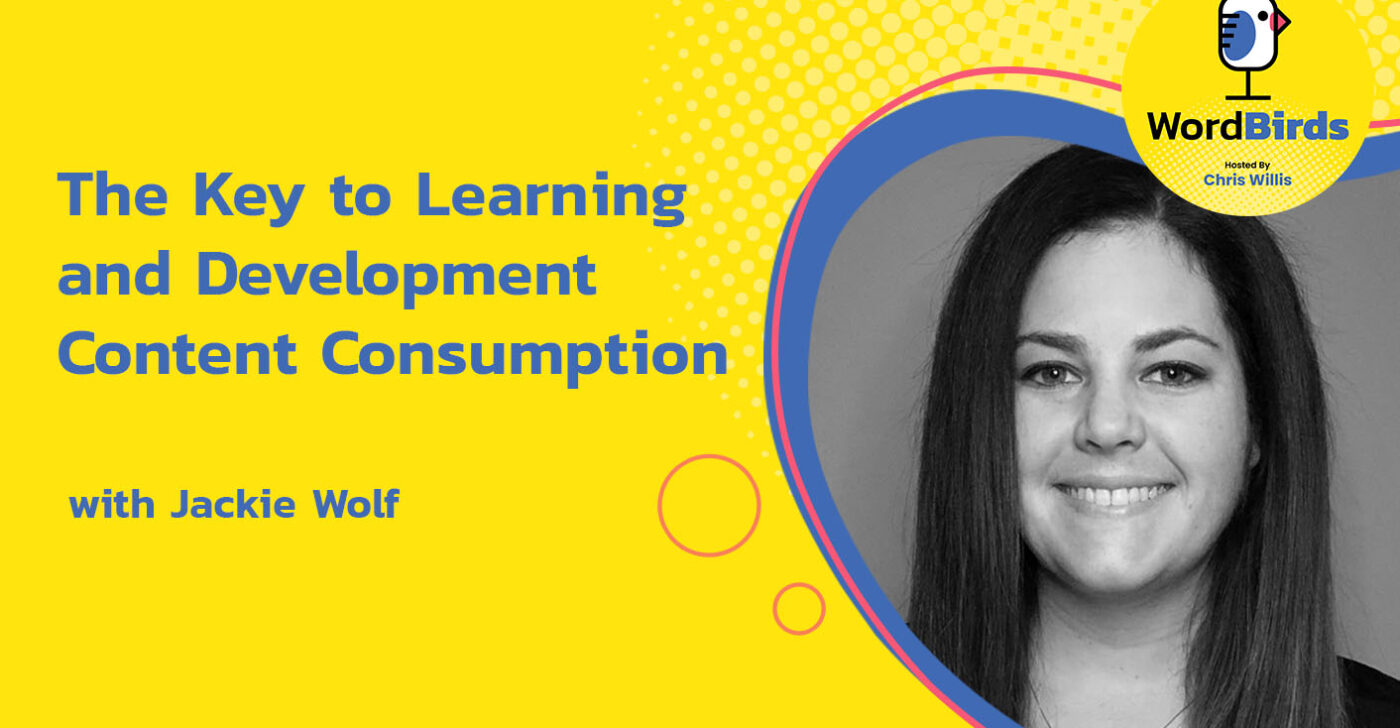What do we mean when we talk about content strategy, and how does this impact your business? In this episode, Chris Willis chats with Sheri McLeish, the Director of Content Strategy at MERGE. A content strategist since long before they were called content strategists, Sheri McLeish helps clients understand how to effectively manage content across people, processes and technologies to deliver on business goals.
Today, Sheri discusses what’s necessary for somebody coming up from a writing or editorial role to move into a content strategy role. Content as an industry is continually evolving. Tune in to this episode to learn about how to elevate your content from a strategic lens.
Watch the episode here
Listen to the podcast here
Read the full episode transcript
On the show, we have Sheri McLeish. Sherry is the Director of Content Strategy for a company called MERGE. MERGE is the blending of storytelling and technology to promote health, wealth, and happiness in the world. We’re going to talk about a couple of things. One, we talk about the content impact a lot. We tend to think about the business impact of content.
Sheri’s going to talk to us about taking the impact and moving it out to the end user, thinking beyond business value to where impact lives. She’s also going to tell us about what’s necessary for somebody coming up from a writing role or an editorial role to move into a content strategy role. Sit back. Let’s get some insight from the flock. Sheri, welcome to the show.
Thanks for having me.
I’m excited for you to be here. One of the things that I’m always fascinated with is that there are so many definitions for the word content strategist. As a Director of Content Strategy at MERGE, what does content strategy mean to you?
It’s the first and most challenging area to address with people and clients because it’s such a broad area. Content can mean everything from editorial to some of the platforms in technology that you’re using. I take a very broad view of content strategy that looks at the lifecycle of content from ideas and coming up with editorial all the way through producing it, distributing it, measuring it, and understanding its success.
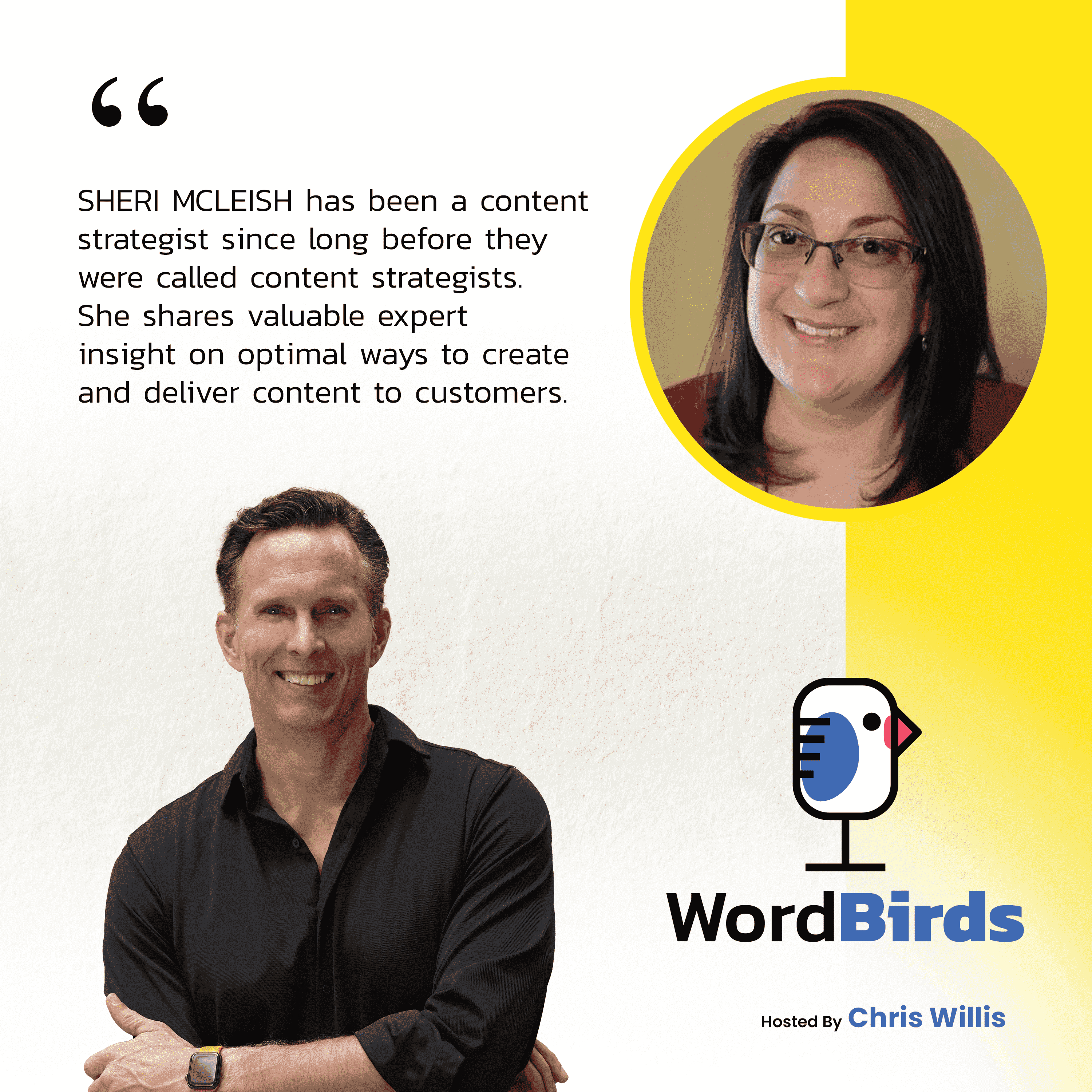
I know that you have a process or a checklist that you work with your clients on. When you start working with somebody, how do you take them through this process?
We have a pretty well-defined methodology grounded in best practices. We usually start with what we call discovery. As it sounds, it’s around learning about a client, their environment, their customers, their pain points, and their goals. Often, I liken the discovery conversations that we have upfront to therapy. It’s content therapy where they can start to share with me what their day-to-day is like and what the demands are on their roles and the content that they’re looking to produce.
What’s most important when you work through that process in delivering impact in the content that’s being created?
It depends on what the task at hand is. I’ll work on everything from large transformational projects where you’re maybe instituting a digital experience platform to smaller efforts such as developing a campaign. For both of those things, they do follow a very similar focus, and that’s on the audience. What does the end user need to do? Often, I start working backward from who we’re trying to get to understand what we’re trying to convey to them and use that lens across all of the decisions and strategies that we’re looking to implement.
That’s incredibly interesting because when I talk to my customers about content impact, generally, what I’m talking about is business impact. You’re creating a piece of content for a purpose, whether it’s to drive conversion or drive user adoption, or increase customer satisfaction. We talk in terms of impact as a business result. It’s something that somebody is measured on. It’s something that somebody’s bonus is tied to.
You’re taking this to a place that we don’t talk about that much, which is the actual value to the consumer or the person that reads the content. You’re starting all the way at, “I’d like somebody to be better. I’d like somebody to be able to be smarter, be more literate on a topic, and be able to use something better,” and then working backward. Do you think I’m getting that right?
Yeah, certainly. We always take an audience-first approach. For me, it’s a little even deeper than that. When we think outside of the business world of our day-to-day lives, we interact with content all the time, but it’s not always from big brands. We see the disparity in the quality, accessibility, and understandability of content in our daily lives.
What I like to do when I work with clients is open the aperture to your point. I’d be like, “What are we trying to do? What’s meaningful, not for your business and measures?” What I like to also suggest to folks is that it’s not just KPIs, page views, and things like that, but it’s a broader measurement that you’re looking to understand in terms of people’s perception of your brand and things that are a little softer to measure.
What a lot of organizations forget about is what is the content that's going to be hitting these folks wherever they are on their journey. Click To TweetWe start by looking broadly at who your audience is and what they are trying to accomplish here. It’s the demographic data. A lot of the research that fuels content strategy is guided by stakeholder interviews, audience research, surveys, and other inputs that we can use to create what we call personas. I’m sure you’re familiar with the term. We’re using personas and journeys on how those folks are going forward to achieve their goals.
What a lot of organizations forget about is the content that’s going to be hitting these folks wherever they are on their journey. We look here at MERGE and, certainly, individually, to bring together the audience’s needs, what they’re doing, and what we would like them to do by getting the right type of content that could be in the format, the channel, or the messaging. There are a variety of ways that we would be looking to make sure they can recognize, “This is for me. This is helpful.” They enter that journey and follow the path to all the virtuous business success that we’re looking for, but also to the success of that individual as they’re looking to accomplish a task or learn something.
You would agree then if you think out here at the consumer and you start there, the business results are going to come. They’re going to follow. If you’re creating content that works with your audiences, then all the things that you had intended from a business result, whether it’s conversions or customer satisfaction, or NPS scores, all that’s going to come with it if you started further out and created the content that is audience-centric.
There’s no accounting for taste, but we’ve seen this in our consumer lives. The quality rises to the top. Rotten Tomatoes is a good example of a reliable arbitrator. If the content is there, it’s good, and it’s a compelling story, it’s going to be highly rated and viewed. The same goes for business content. If it’s useful for solving or answering a question, then it’s going to be used. It might be shared if you’re lucky. It’ll get some legs and move around to other people so that it gets even more exposure, which to your point, is a win for the business. We’re starting to seed and get more visibility and usefulness for folks discovering it elsewhere.
It’s altruism in the enterprise content world. You’re thinking through the real needs, not just the business needs. I love that concept because, in a world where you could get, whether through technology or manually, that type of feedback from your audiences at scale and use that to come back and define your strategy, you start to go from the strategy you create to the strategy you learn from your audiences. It goes from internal to audience-defined. I would think that if you have an audience-defined content strategy, you’re creating more valuable content both for the user and the business.
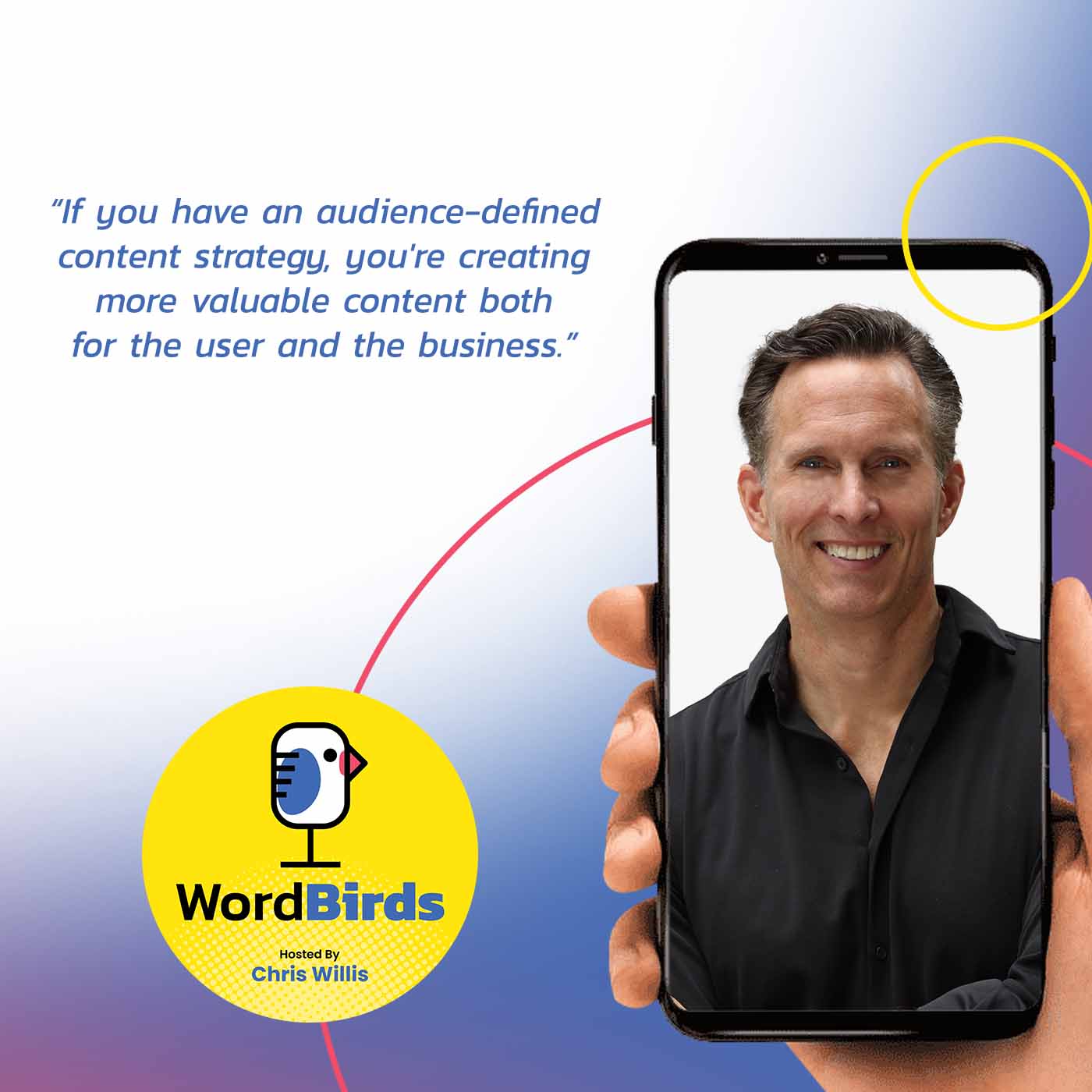
I would agree with that. One of the interesting things in my career is that I’ve always been at the forefront of emerging technology. I don’t want to date myself, but I was around when we converted a lot of things from print to digital. We saw the advent of mobile and social. We’re seeing the introduction of AI, big data, and things like this.
We’d like to look outside at the market as well. It’s understanding the audience and their needs. What’s the new way that we might be able to deliver or present content that’s been an accelerator or imagined by some of the technology advances? It’s been an exciting career to be on the content side of things because, at the end of the day, the message, value, and simplicity of what you’re presenting are important, but a lot of the means by which you’re able to deliver that or find people has changed dramatically.
We’re dealing in a world where there’s AI, augmented reality, and virtual reality. There’s a content need in all of that. I don’t have goggles to see these things, but I have to assume that there’s a need for that. You have some experience in that area, right?
I have a little firsthand experience working in some of these emerging areas in AI and looking at how we can, for example, do what we call removing the human in the loop. A lot of times, there are processes. If you want to schedule an appointment or do something, you got to talk to somebody. There’s been a long march towards removing that human in the loop and letting systems talk to one another.
When we look at AI and how we get that language and knowledge of all the people talking to their devices into a place where we can then distill it back so that there’s this greater comprehension on the consumer side, all of those inputs still need guidance from the business side. The technology doesn’t do it itself. What’s interesting is to see the import of language and the care that people are taking with words and how they’re able to collect such volume.
Editorial skills are important to marry with technology so that we can start to bring these disciplines together. That’s when we’re most effective. It is to think, “How do people consume and understand information, and then how does this technology automate it?” Nobody has all the 100 scribes to be able to address everything. We get scale through technology. You still need that editorial eye to ensure it’s understandable and accessible. This is the guidance. Strategy is a great place to be when we start looking at how we would go forward with those types of innovations.
It has to be because there are so many channels, and alignment matters. Take a brand as one thing that needs to be aligned across all of those channels. To your point, there’s the editorial process. You’re like, “How do I ensure that I’m using the right clarity, consistency, and character across all of the delivery mechanisms that we use and tweak them for those audiences so that I’m creating something that resonates using the channels that we care about?” It’s a big and never-ending challenge. It does start with the creation of a solid strategy and the ability to then manage and govern that strategy across the business.
I’ve always stood on the three pillars of people, process, and technology. We don’t want to let technology wag the dog. A lot of times, I like to look at the process. That’s a great place to start to find pain points and solve them by bringing in then either the right knowledge roles or technology to make improvements there that ultimately can help drive reuse. I’m a big fan of reusing content. When you mentioned channels, strategy is important to think about the ecosystem upfront.
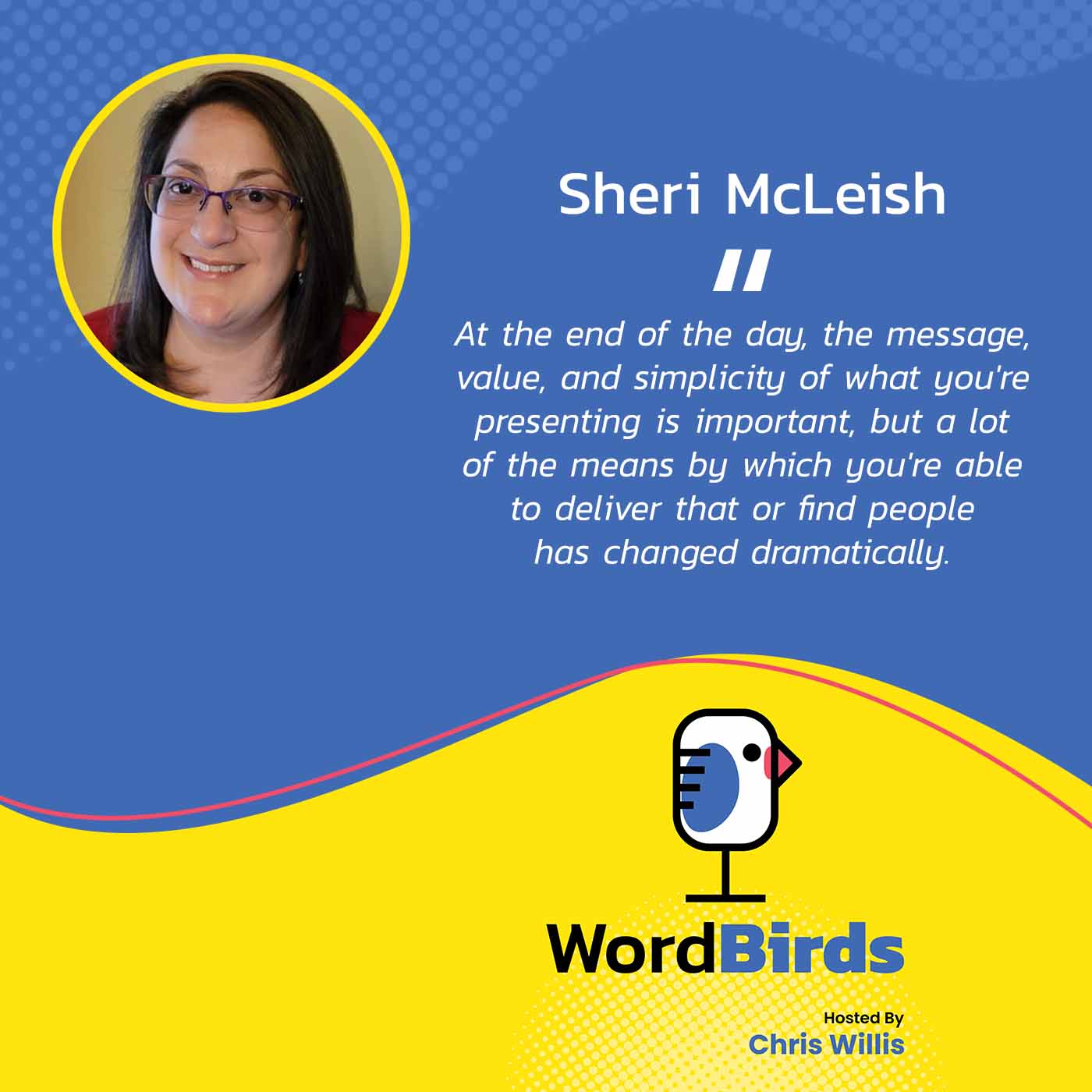
One of the pain points I see a lot in clients is that they’re focused on email or CRM. It may be that they have a website and then they have social, but they maybe don’t have effective upfront planning around where we’re going to place it. It’s thinking about bundling content, to your point. Editorially, you’re having short, accessible ways to get to the information. It may be longer depending on how somebody wants to access or read it. What we don’t have control over is how people are going to find and consume our content. We can only make it available broadly and in the formats that we feel will be most relatable to the audience as we understand them.
For somebody getting into this space, what are the things that somebody that wants to move into content strategy should know? They may be a writer in an organization that has stepped into a marketing department or a technical content department and wants to move into this strategic role. What makes somebody successful? What do they need to know about?
I don’t know if I have all of these attributes, but I certainly look for them in the people I hire. Being methodical and detail-oriented remains a top need. You need to be able to consume a lot of information, analyze it, and distill it. The analysis in thinking is going to be important as well. One of the things that maybe would serve people well that young people might not always have coming up is business experience.
I have a little bit of a unique background. I came up through English and Journalism in a more traditional editorial-focused area, but then, I was interested in business and worked as an analyst. Having an understanding of business and the language of business is important, not just for content strategists but for other specialty domains. At the end of the day, you need to sell your ideas and talk to folks the way they’re comfortable. It’s reaching your audience in a language and in a way that’s going to resonate with them.
That came through for me when I was an analyst at Forrester. We like to distill things to senior-level understandability, which is very important. You can always get into the details, but if you lose them at the beginning, then you’ve lost it. I would say it is business understanding, strong analytics, editorial skills, and writing organization. Being methodical and curious is also important to be able to ask questions and explore.
What we don't have control over is how people are going to find and consume our content. Click To TweetI only see this as an area that will continue to grow. In my opinion, content is the fuel that’s running the enterprise. You can’t do anything without it. Every touchpoint that we have started with words. Whether it’s written, spoken, or scripted, everything comes from a top-level messaging document and moves its way down. If we don’t think through that process, you’re damaging one of the most important assets and most valuable assets that you have in your business.
This continues to grow. This role continues to become more important. I have a vision that, at some point, there will be a C-level content owner across the business. It’s still siloed in most businesses, but there is a future state where somebody cares about everything in the organization that’s written. It doesn’t exist in many businesses, but it’s going to.
We’re seeing a lot of Chief Experience Officers emerging as a role, for example. It ties into that where there’s enough need to be thoughtful and collaborative around content and experience so that it can be pulled off successfully. There’s a lot on the technology side as well. I would agree with you. There’s probably a need.
What we tend to see is organizations that are still with a digital production manager or they have marketing roles, like a product manager, that may be working in content but necessarily didn’t come up through a content area. They might not have the exact same skillset. Everybody’s familiar with the content and certainly has a point of view, but there’s a level of knowledge that’s going to be making the strategy that you develop more actionable.
We hear that word a lot. We’re like, “We want to be actionable.” It’s been around for a while. From the content side, we need to think about that early because people also want a return on investment. That’s what they’re talking about when they’re talking about actionable. It’s, “How can we save money or make money?”
It’s good to come in early and look at basic hygiene. We see, from an SEO perspective, there is some cleanup writing, to your point, meta descriptions, and all the fundamentals. It is starting there and seeing what lift you can get and then evolving to that place where you can be among the leaders that are emerging. You may be giving your audience the type of content experience that they desire because maybe they’re encountering it as a consumer if you’re in an industry that’s not a consumer brand, for example.
That’s fantastic. That’s so useful and so actionable, to your point. If people are trying to find you and connect with you because they’re following, reading this, and realizing that you’re amazing, do you have a LinkedIn or some way that people could contact you?
I’m on LinkedIn. People certainly do message me. Feel free to if you had a question or wanted to further talk about what we can help you with at MERGE. I’d be happy to hear from folks.
Thanks for being on the show. I know people are going to find this very valuable. We’ll be back at some point to talk about your Forrester experience because I bet there are a lot of interesting things there. Thanks again for being on.
Thank you.
Important Links
About Sheri McLeish

A content strategist since long before they were called content strategists, Sheri McLeish helps clients understand how to effectively manage content across people, processes and technologies to deliver on business goals.
A seasoned professional, Sheri has hands-on experience as an editorial leader as well as a business strategy consultant, having done stints as a journalist, editor and managing research editor before becoming an analyst with Forrester Research and joining the agency world. Her specialties include research and analysis, thought leadership, content operations, taxonomy, and emerging tech and content product strategies. She’s worked with clients across industries, with broad knowledge of regulated industries such as financial services, healthcare and insurance, as well as media, retail, CPG and tech.
Some of the brands Sheri has worked with while at Merge include Philips Healthcare, T-Mobile, Eaton Vance, Smithsonian, Supernus, Biogen, James Hardie and the American Medical Association.
